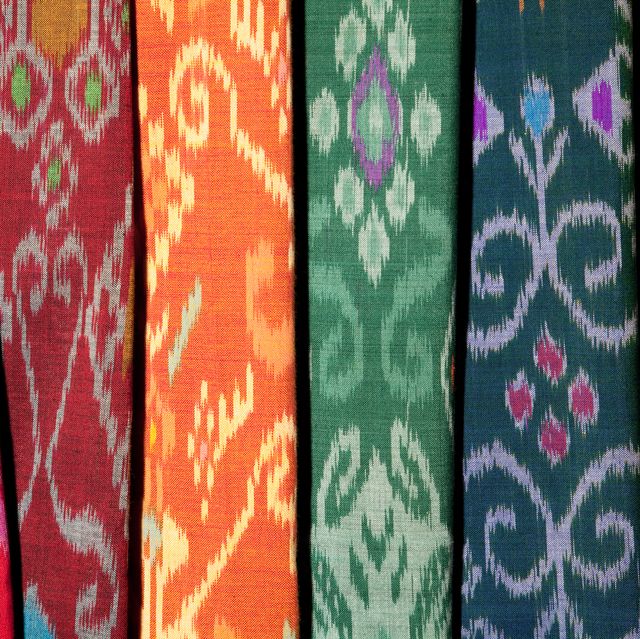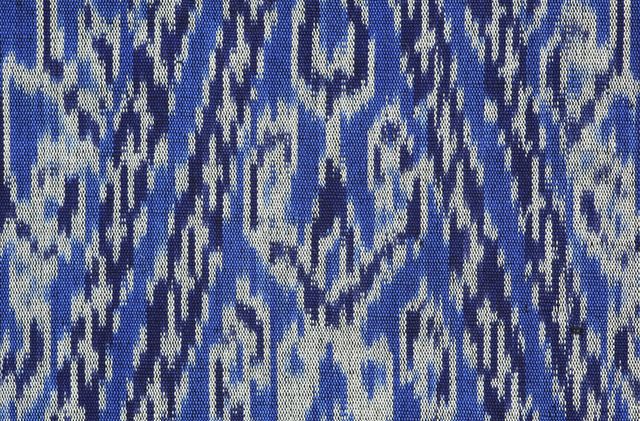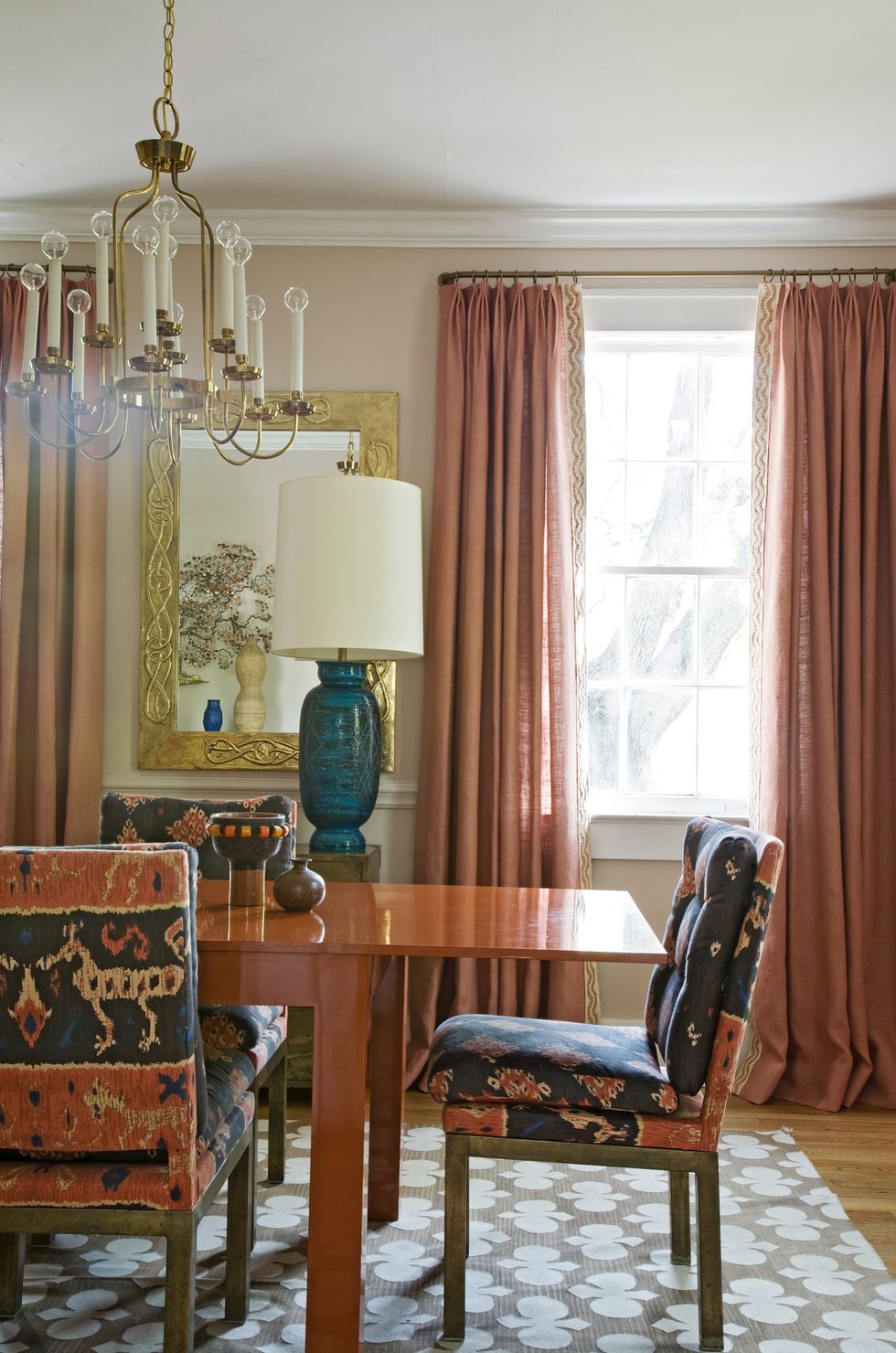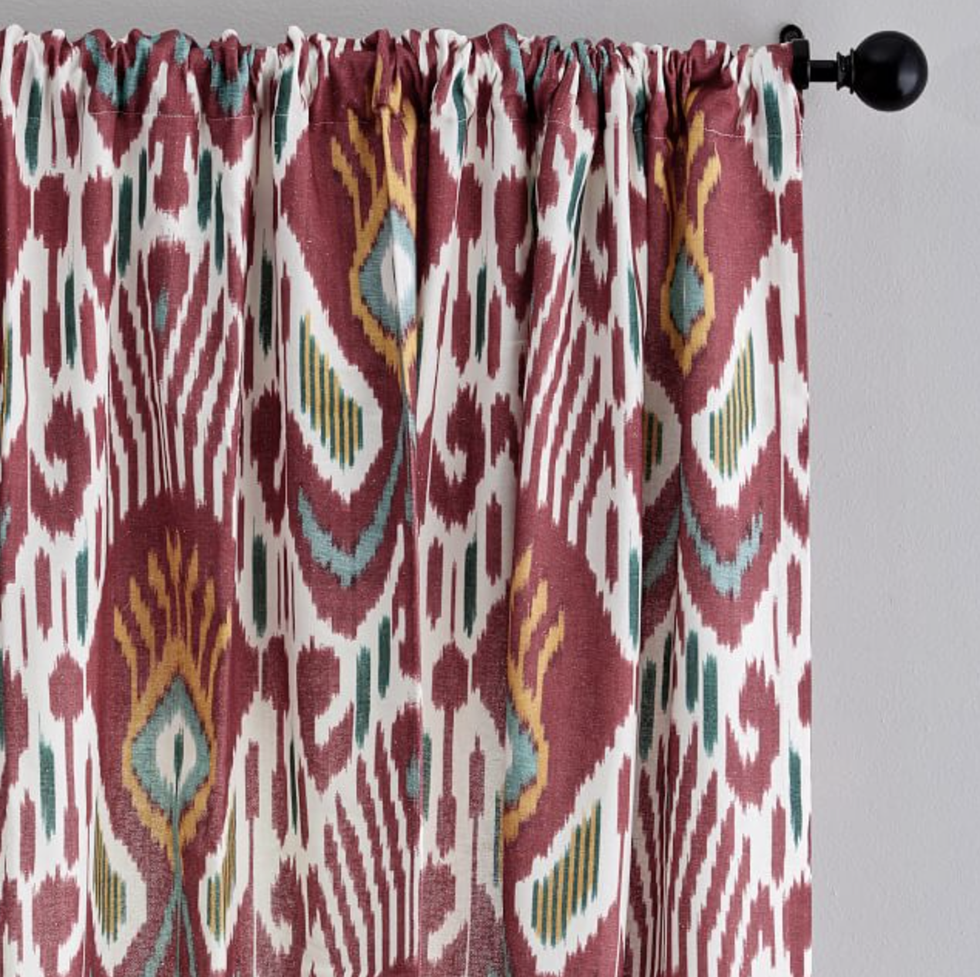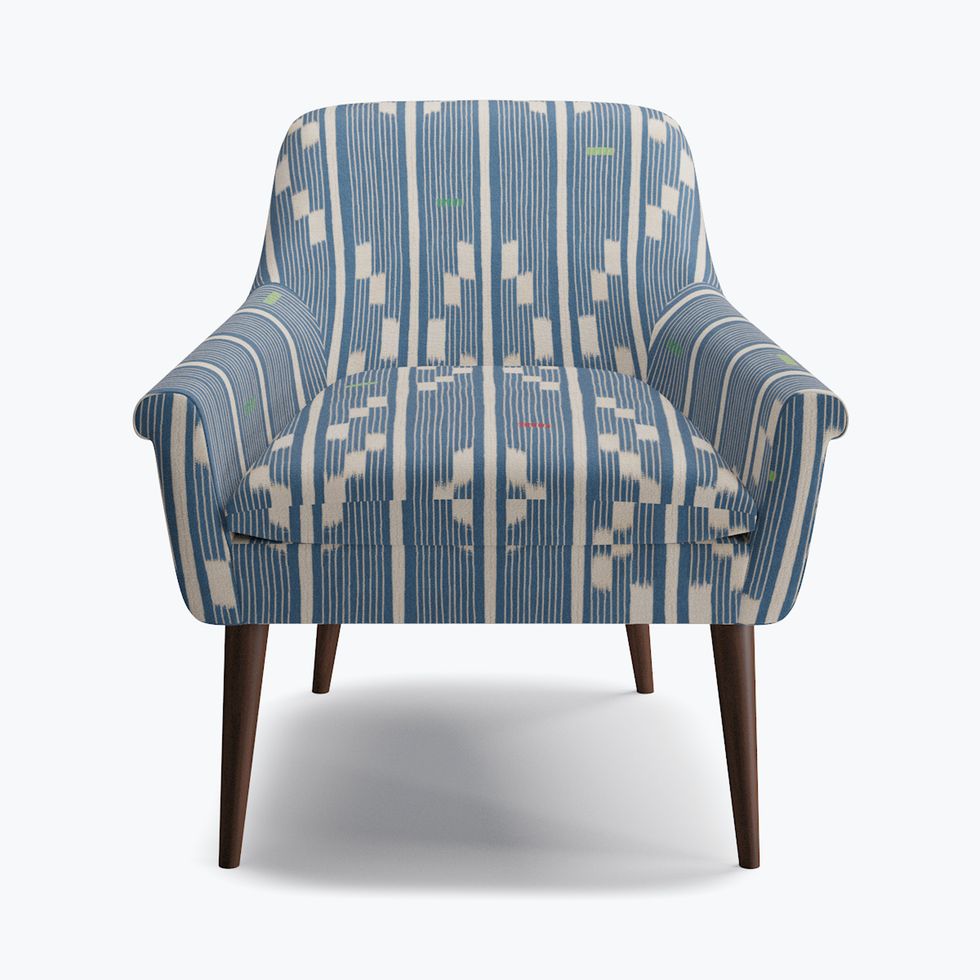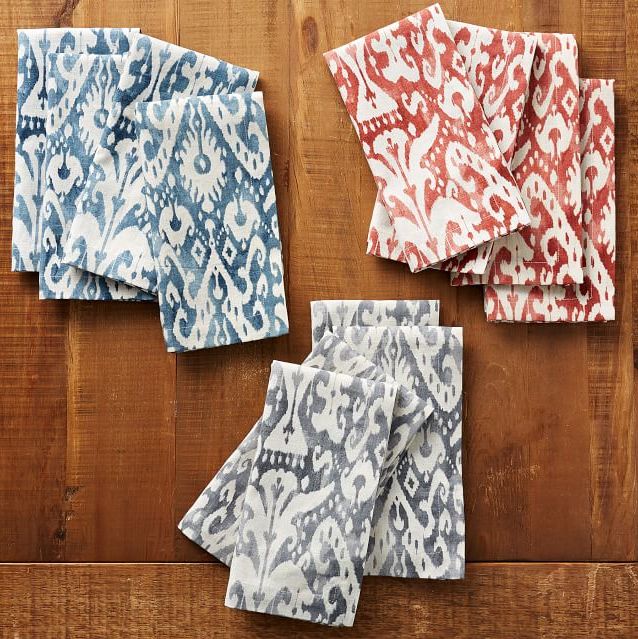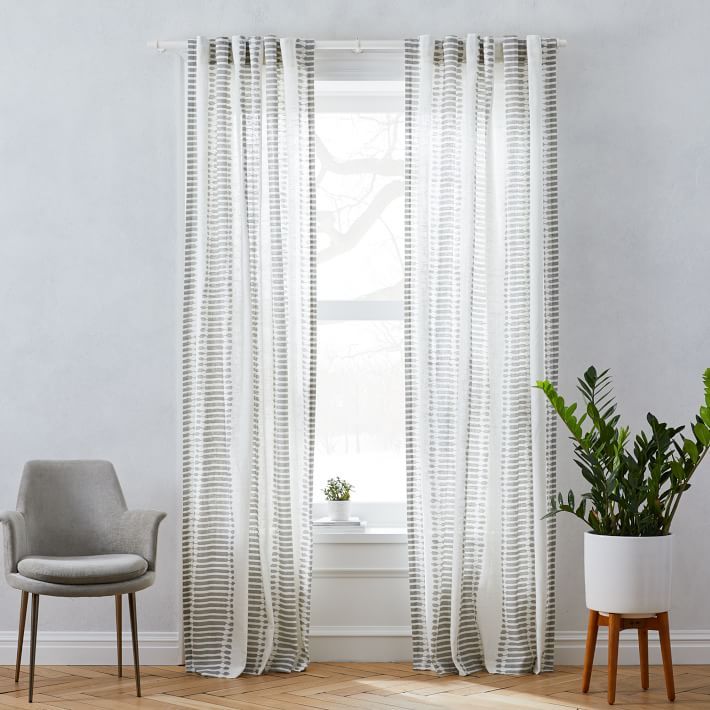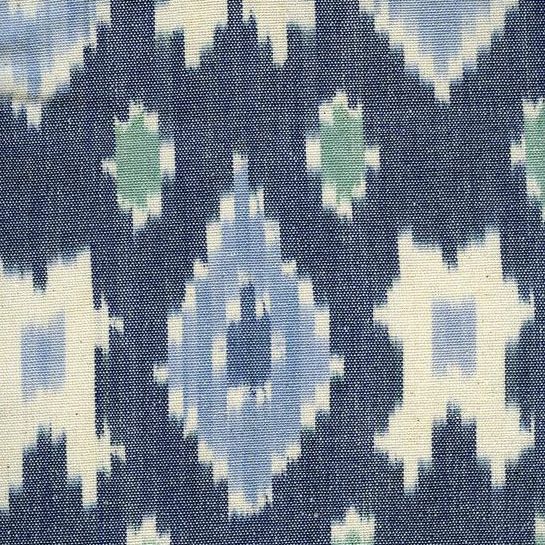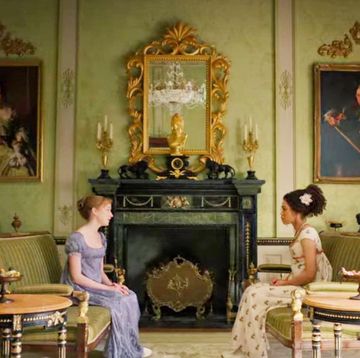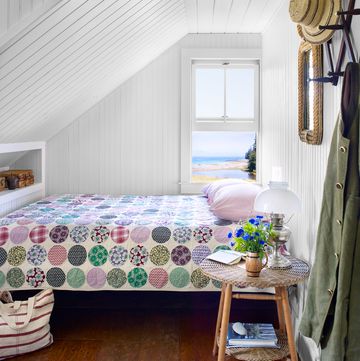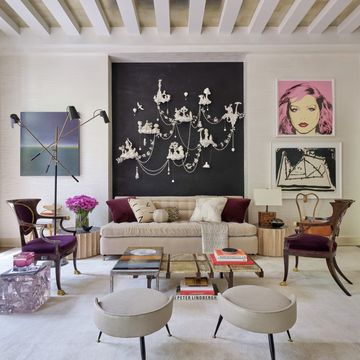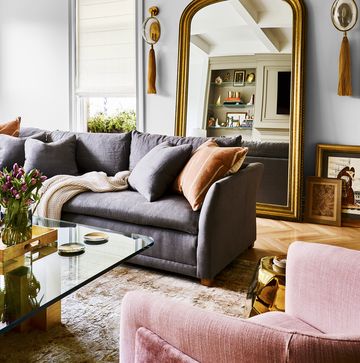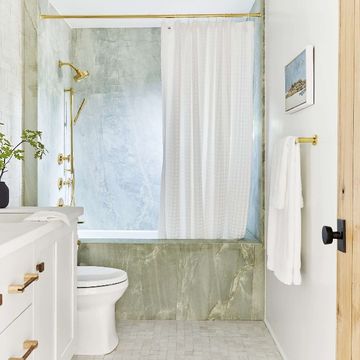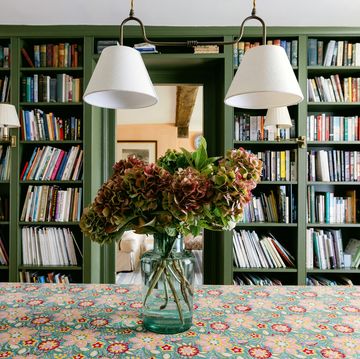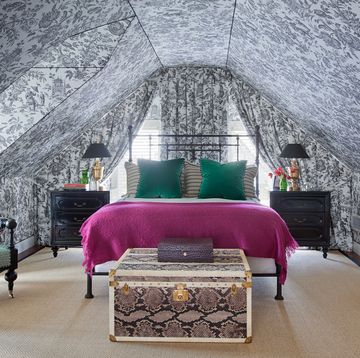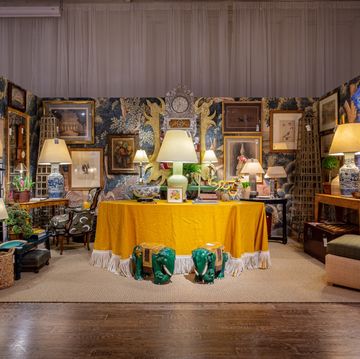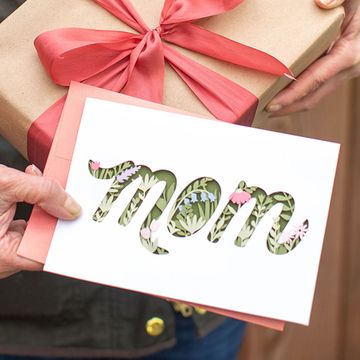When it comes to incredible textile dyeing techniques, Indonesia is the place to be. While batik might get the lion’s share of attention—and it really does produce a beautiful product—ikat (pronounced ee-kaht) is undeniably impressive, too. Like batik—and even classic American tie dye—ikat is a resist-dyeing technique: Yarns are bundled and bound with string then dyed to create patterns. But as designer Angie Hranowsky explains, there’s something quite unique about ikat: “Unlike batiks and other techniques, ikat yarns are dyed before they are woven into the cloth, making for a very complicated but beautiful process.” As such, it takes incredible skill to become an ikat artisan!
The History of Ikat
Pre-weaving dyeing techniques developed independently in regions all around the world—notably in the South American Andes, the Middle East, and all throughout Asia—over the past two millennia. But the strongest concentration of this textile production was in Indonesia, where the ikat technique took its name from Malay word mengikat, which means “to tie.”
Ikat reached the Western world in the 20th century via Dutch traders in Southeast Asia and travelers along the Silk Road (the region that is now Uzbekistan was another hub for the technique, where it is called atlas by the Uyghurs.)
Different Types of Ikat
There are three main types of ikat, each related to the components of woven fabric known as warp (the yarns attached to the loom and held stationary) and weft (the yarn that’s thread between the warp yarns in an over-under pattern). They all can be dyed with a single color or multiple hues—and the more dyeing, the more difficult the process!
Warp Ikat: The simplest form of the technique, warp ikat involves dyeing the warp before weaving the undyed weft into place.
Weft Ikat: As you might guess, weft ikat is when the weft is dyed before weaving, rather than the warp. Since the weft is not stationary like the warp, it’s significantly more difficult to achieve perfect patterns with this technique than warp ikat. Oftentimes the patterns are left slightly blurry due to the pattern alignment being ever so slightly off; that blurriness has actually become a signature look of ikat.
Double Ikat: The most difficult technique of them all, double ikat means that both the warp and the weft are dyed into patterns before weaving: assembling them together is an impressive feat of craftsmanship. Given that difficulty, double ikat fabrics are the rarest and most expensive ikat products.
How Ikat Is Used in Interior Design Today
Ikat has traditionally been used in a variety of products, from clothing to funerary shrouds to wall hangings, and these end products are still very much the same today. (Though oftentimes contemporary “ikat” is not actually ikat at all: The textiles simply feature ikat-style patterns that have been printed into the fabric rather than dyed into the yarn before weaving.)
“Ikat-style patterns are often used in today’s interiors—for upholstery and draperies, as well as rugs,” says Hranowsky. “I love vintage ikats and often incorporate them in my designs—draped over a sofa, chair or bed, or even as a wall hanging. I also love to use ikat textiles to make pillows; they add a beautiful shot of pattern.”
Follow House Beautiful on Instagram.
